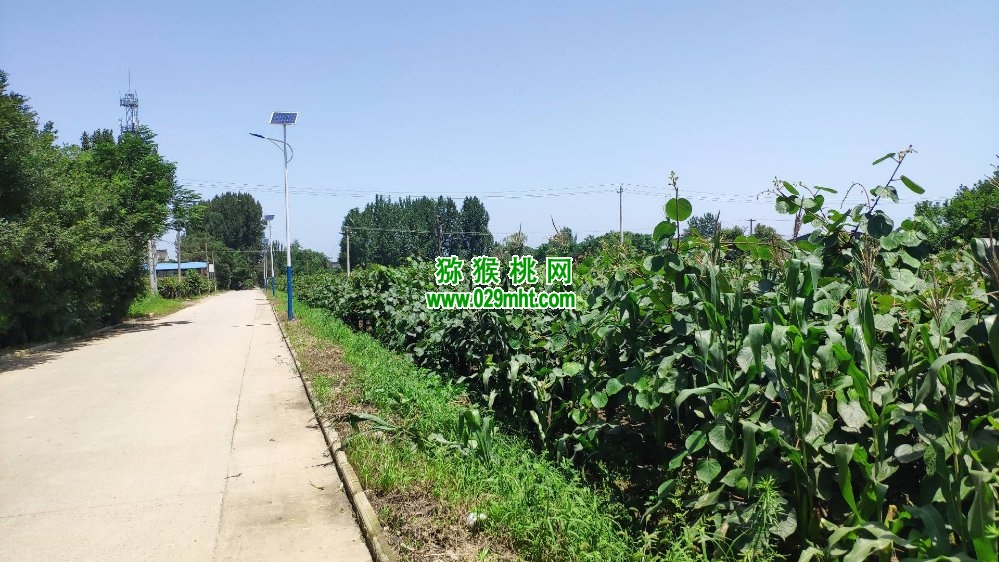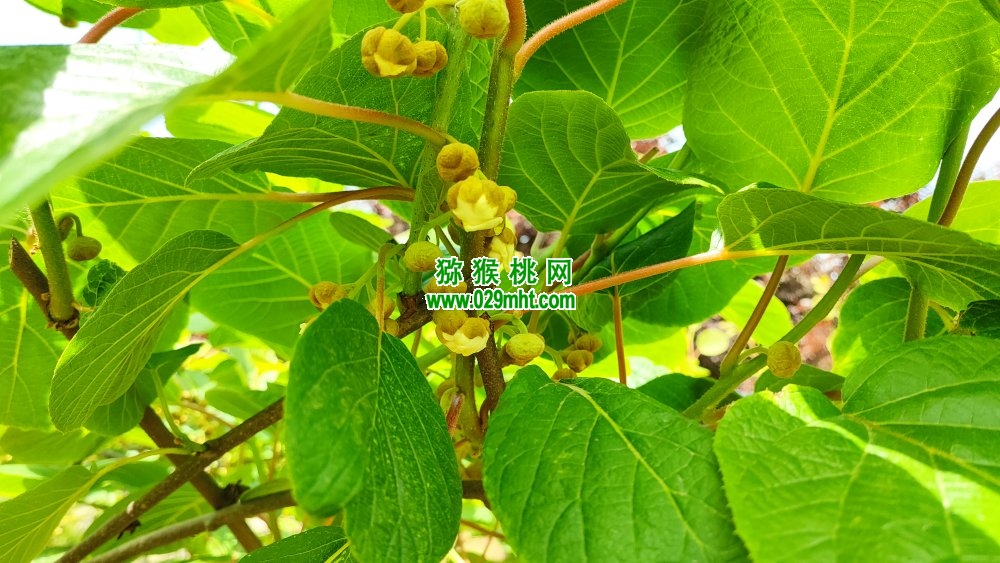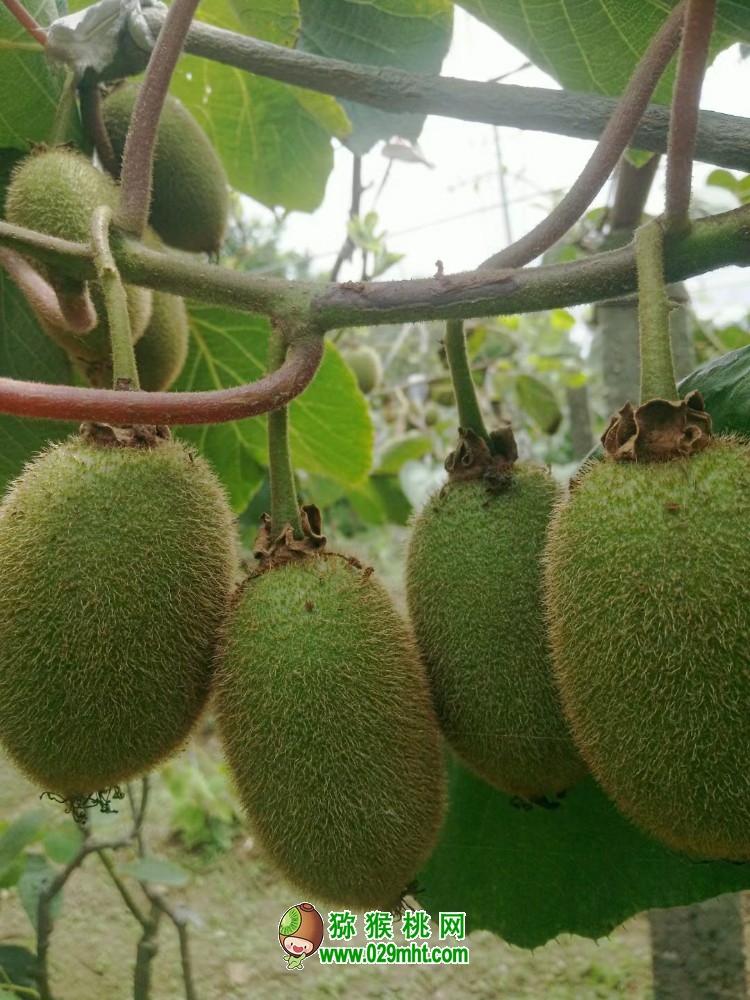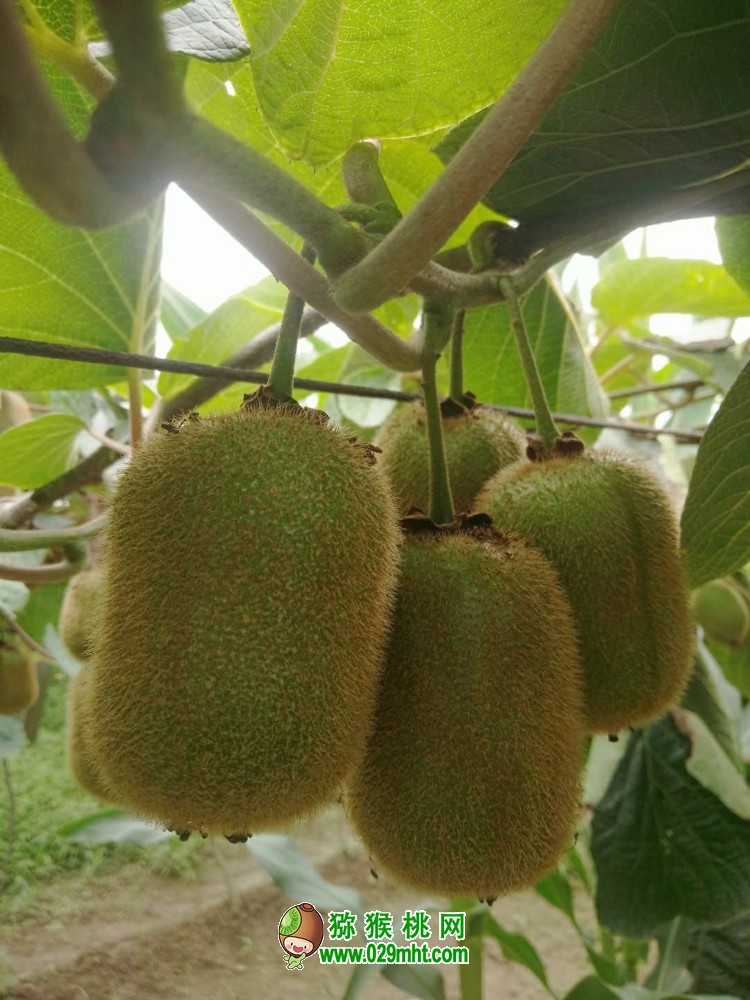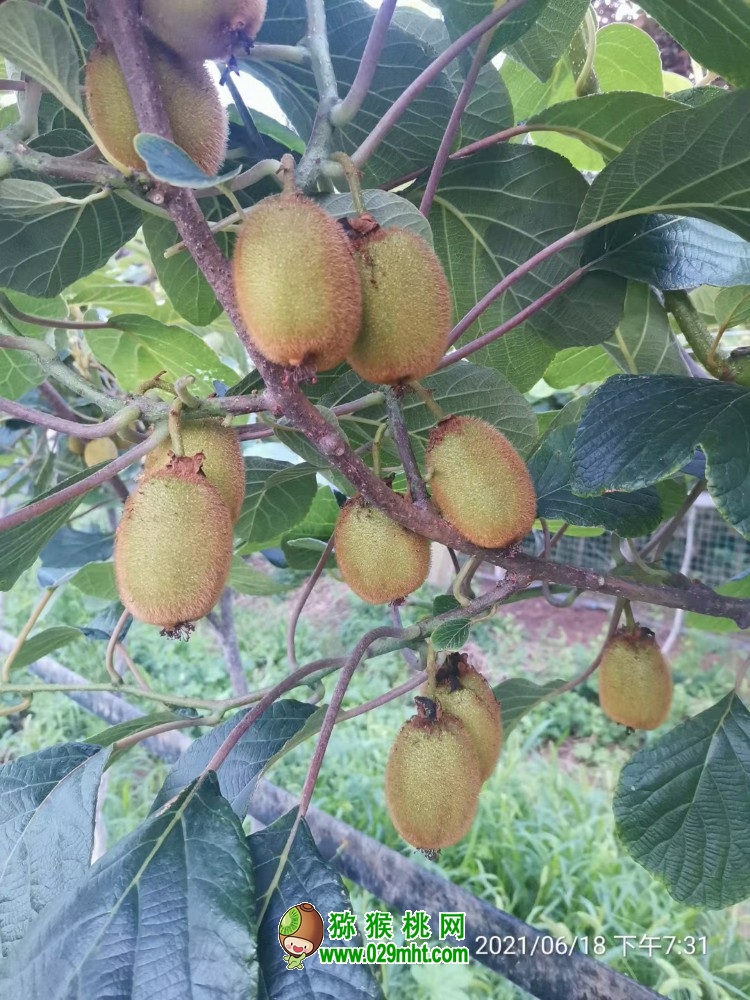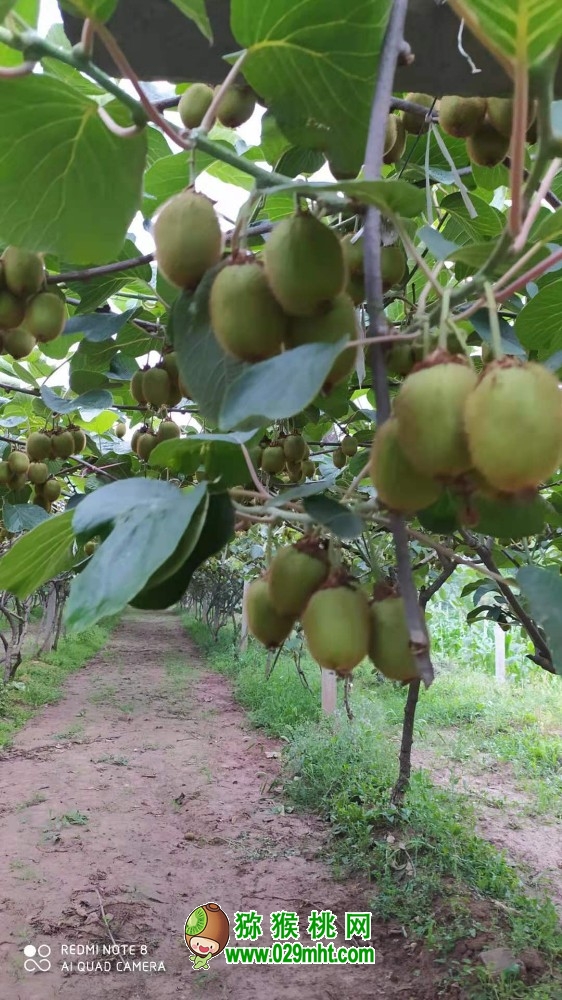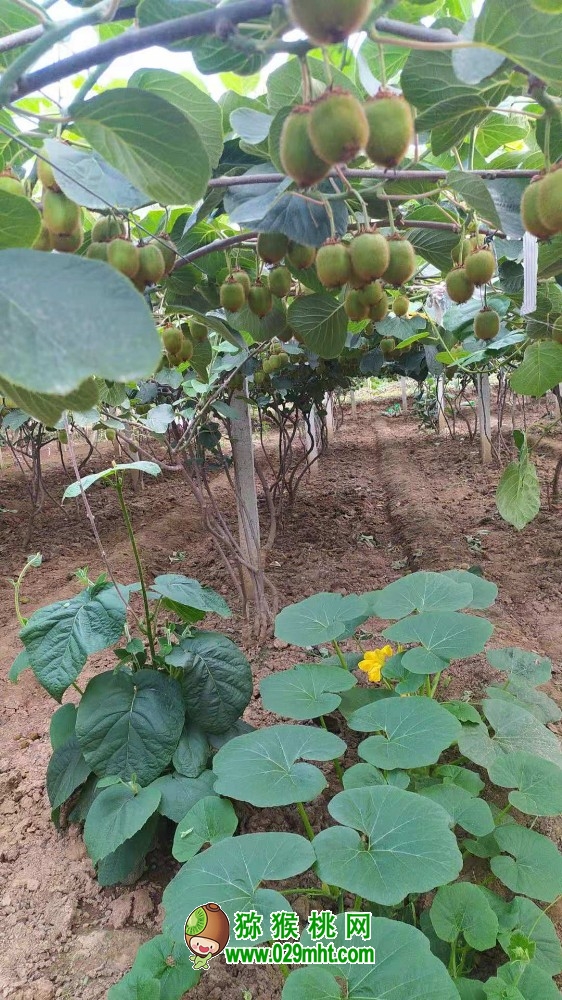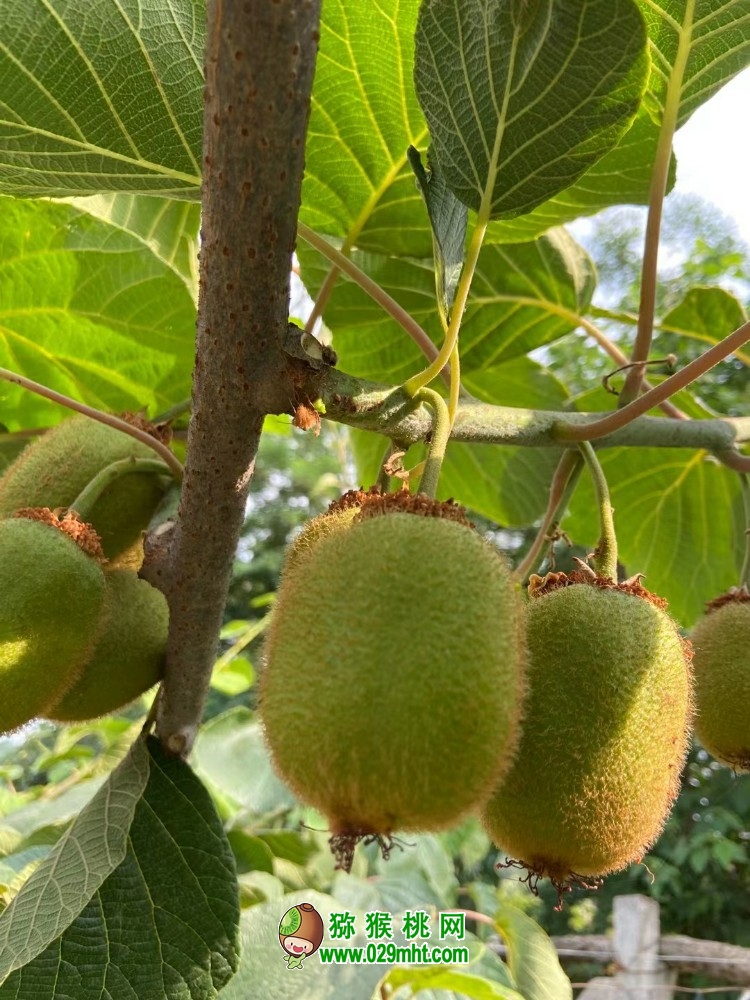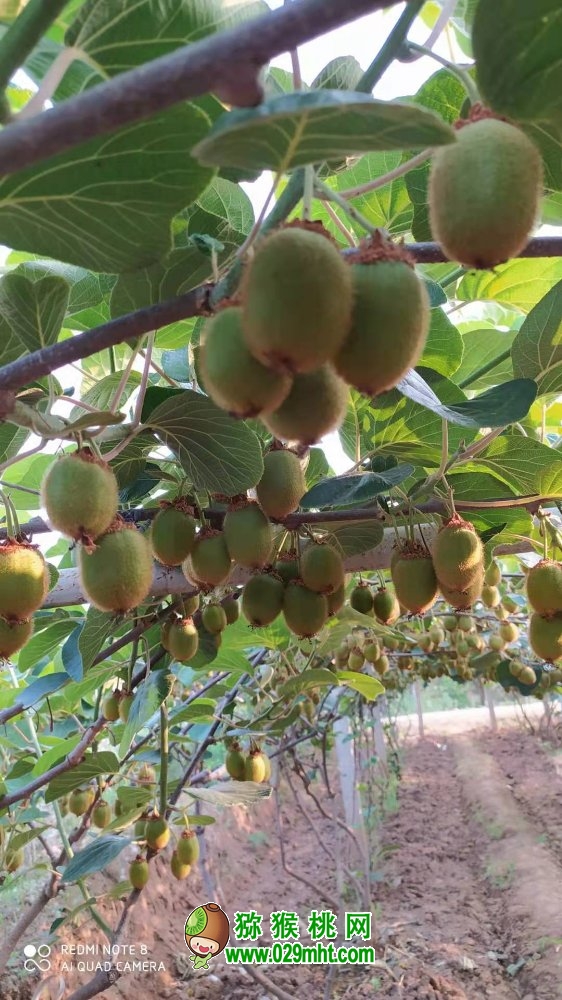New Zealand Kiwifruit Species
- Abbott: this species was discovered in the ’20s and was first cultivated in the 1930s. The fruit has a medium size with long, soft, numerous hairs and an elongated shape. It has a light-green flesh with good flavor, and lasts for quite a few days when picked. It ripens in early May, and has horizontal styles. The vine is very productive and hardy, the petals do not overlap. It resembles the Allison variety and represents most UK kiwi exports.
- Allison (‘Large-fruited’) – this was also discovered in the ’20s and was first cultivated in the 1930s. The fruit is a little broader than the Abbott variety, with an elongated shape, of medium size, with a very hairy, brown skin; flesh is light-green, of good flavor. Fruit keeps for a long time and ripens in early May (it blooms later than Abbott). The vine is very vigorous and hardy. Flowers have broader, more overlapping petals than ‘Abbott’ and have crinkled margins. Styles elevate to 30 or 60º angle as flower ages. It was very popular years ago but has since been surpassed by the Hayward
- Bruno (‘McLoughlin’; Longs’; ‘Long-fruited’; ‘Te puke’)– also discovered in the ’20s and was first cultivated in the 1930s. It bears a large, cylindrical fruit with a broader apex, dark brown skin with short dense hairs. It also ripens in early May like Allison and has the same light-green and good-flavoured flesh. Flowers are usually in pairs or single. Petals are narrower and overlap less; styles are generally longer than Abbott’s, and follow a more homogeneous pattern than Allison’s
- Hayward (‘Giant’; ‘Hooper’s Giant’; ‘McWhannel’s’)–also discovered in the ’20s and was first cultivated in the 1930s. Also called “Chico” in California, it was introduced in the US as P.I. 112053 before being named in New Zealand. It is by far the most popular cultivar, and is indeed the only commercial one in California, and the leading kiwifruit species in both Italy and New Zealand (72% of Italy’s crop!). The flesh is light green and very flavorful, its fruit keeps very well and ripens in early May, with dense silky hairs and a brownish skin (or green if it’s not completely ripe). Its vine blooms quite late because it needs pollination from late-blooming males. It has broad and overlapping petals, with erect styles
- Monty (‘Montgomery’) – a chance seedling in New Zealand, discovered in the ’50s and was first cultivated in 1957. Petals overlap a little bit at the base, its flesh is light-green, also ripens in early May like Allison. The vine is very productive and vigorous, and the fruit is oblong and “squared” with a wider apex.
- Greensill– it’s a fairly recent variety with a very regular cylindrical shape and flat ends, with a thick, short shape in comparison to Allison. The petals do not overlap at the base and are narrow, with erect styles
There are also varieties being developed to be specifically hairless: an experimental plot with thousands of seedlings was set up in 1980 in Pukekohe, New Zealand.
免责声明:部分文章来自互联网,仅用于学习,如有不妥请联系我们第一时间删除。
扫描关注猕猴桃微信公众号1
微信公众号码:sldmht
微信公众号名称:十里地猕猴桃

| 猜您也喜欢的: |
上一篇:Kiwifruit Allergy Symptoms如何对待猕猴桃过敏
本文地址::http://www.029mht.com/news/hyxw/2015-11-04/2444.html
本文标签:















